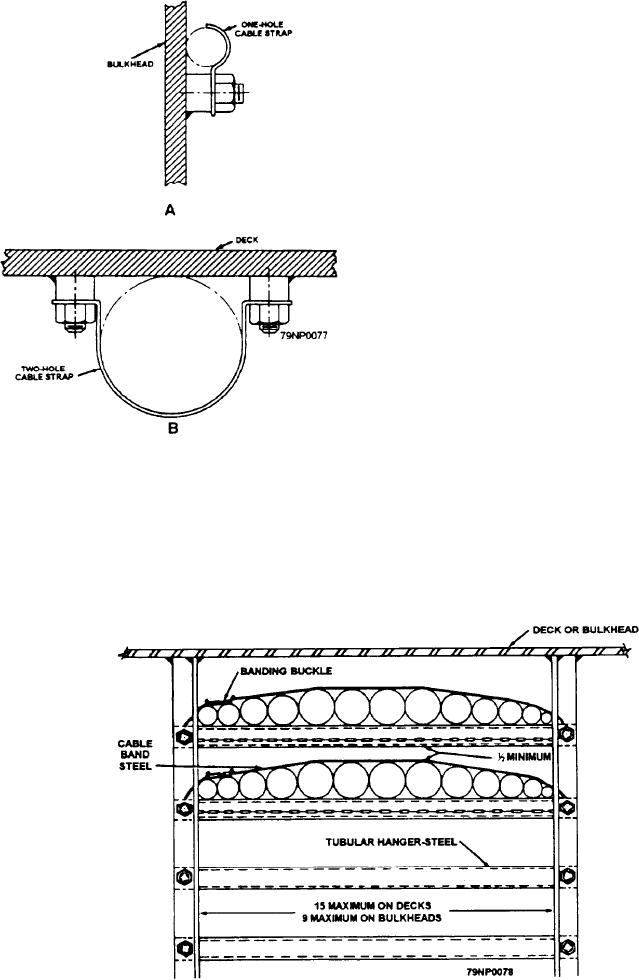
so forth. The one-hole cable strap (fig. 2-30, view A)
may be used for cables not exceeding five-eighths inch
in diameter. The two-hole strap (fig. 2-30, view B) may
be used for cables over five-eighths inch in diameter.
The spacing of simple cable supports, such as those
shown in figure 2-30, must not exceed 32 inches, center
to center.
Cable Rack
The cable rack is more complex than the single
cable strap. The cable rack consists of the cable hanger,
cable strap, and hanger support (fig. 2-31).
The banding material of the cable rack is 5/8 inch
wide. It may be made from zinc-coated steel,
corrosion-resistant steel, or aluminum, depending on the
requirements of the installation. For weather deck
installations, use corrosion-resistant steel with
copper-armored cables, zinc-coated steel with steel
armor, and aluminum with aluminum armor.
When applying banding material to the cable rack,
you should apply one turn of banding for a single cable
of less than 1 inch in diameter. Apply two turns of
banding for single cables of 1 inch or more in diameter
Figure 2-30.--Single cable strap application.
and for a row of cables. Apply three turns of banding
for partially loaded hangers where hanger width exceeds
Single Cable Strap
the width of a single cable or a single row of cable by
more than 1/2 inch.
The single cable strap (fig. 2-30) is the simplest
Cables must be supported so that the sag between
form of cable support. The cable strap is used to secure
supports, when practical, will not exceed 1 inch. Five
cables to bulkheads, decks, cable hangers, fixtures, and
Figure 2-31.--Cables installed in a cable rack.
2-28

